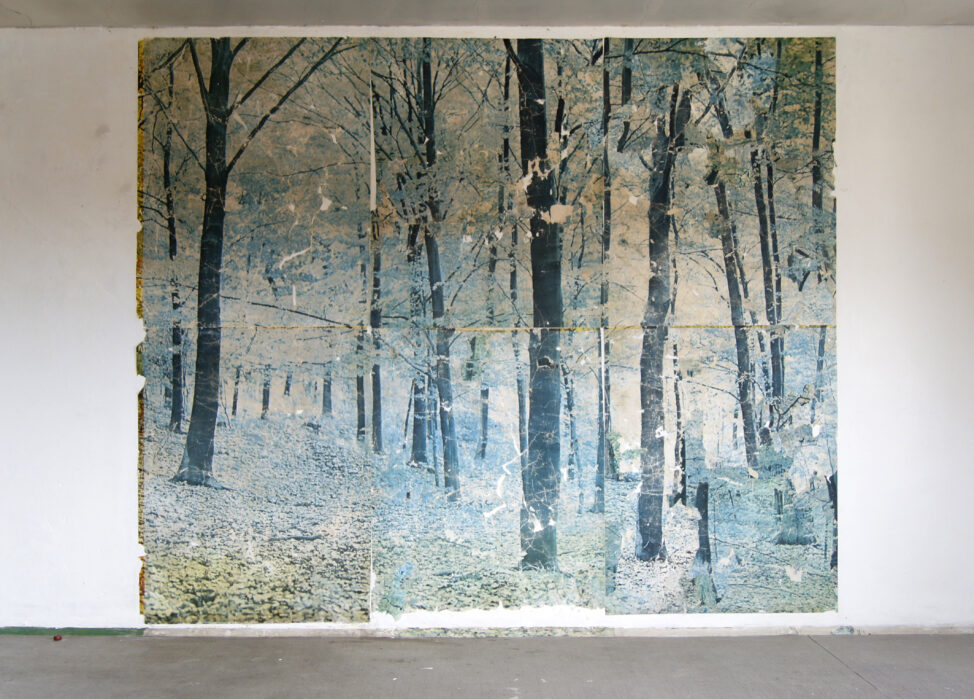Julie Larrouy
FR
-

Panoramic for a Land - 2024 - plaques de plâtres, papier, colle, impressions numériques, dimensions variables
Julie Larrouy lives and works in Brussels. After a Master’s degree in drawing and an aggregation at ENSAV La Cambre, she worked on various collective projects such as FRICHE in Brussels and Massif Continental in Wallonia. She defines her artistic practice as an exploration of the image, probing its inner workings, the ways in which meaning is constructed and its impact on the imaginary. Projects such as Panoramic for a land and Honest host give her the opportunity to question her modes of artistic production.
“Panoramic” is a term used to describe wallpaper tapestries on which landscapes are printed, often promising escapism and conveying a full, credible vision of an elsewhere. Inspired by the classical pictorial technique of reconstructing narrative scenes in a rotunda-like space, the notion of the panoramic comes to define the process that occurs when a succession of images presents itself to the mind as a complete vision.
The Panoramic for a land project takes its title from one of the tapestries I removed from the bedroom of a private home during a residency in 2018. This image of a forest blued by the light over time was peeled off its wall and transported to my studio to be re-composed by rearranging it, then re-pasted a first time as part of an exhibition organized in its place of origin.
Four reconstructions of the panorama have been made to date, each conceived as a specific response to the time and place of its display. Each stage of Panoramic for a land offers a new formulation: the wallpaper is peeled off, then recomposed in a new installation. This protocol-based dimension is intended to be both repetitive and restrictive, yet open to the singular interactions that occur with the site and the shifts generated by these adaptations. It simultaneously implies the preservation and degradation of the material, but also the conservation of a kind of memory of the vagaries of the image which, exhibited, transported, assembled and dismantled according to its exhibitions, becomes a palimpsest of its displacements and reconfigurations. She asks me about her economy, about the shift in which she places the outdated model in the face of gestures, in the face of the present.